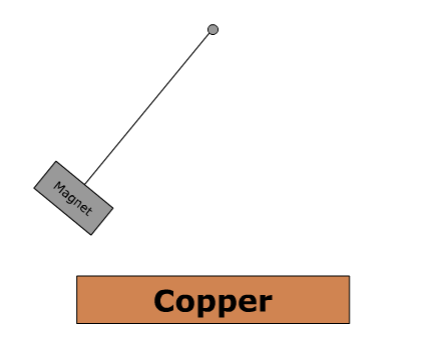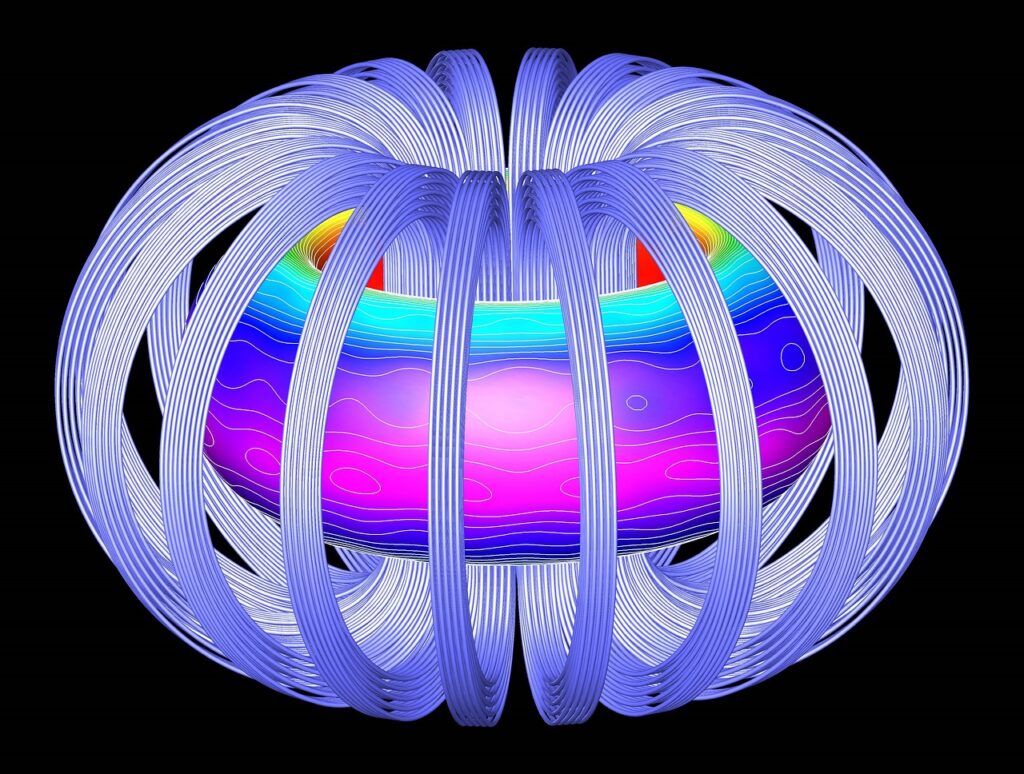Lenz’s Law is a law in electromagnetism, which states that an induced electric current flows in a direction such that the current opposes the change that induced it.

This law was deduced in 1834 by the Russian physicist Heinrich Friedrich Emil Lenz (1804–65). Thrusting a pole of a permanent bar magnet through a coil of wire, for example, induces an electric current in the coil; the current, in turn, sets up a magnetic field around the coil, making it a magnet.
Index
Statement of Lenz’s Law
Lenz’s law states that the direction of the electric current which is induced in a conductor by a changing magnetic field is such that the magnetic field created by the induced current opposes the initial changing magnetic field. Mathematically it can be expressed as:
ε = -N (∂ΦB/∂t)
where ε is the induced electromotive force (emf), ΦB is the magnetic flux, N is the number of loops of the conductor, and the operator ∂/∂t is the partial derivative with respect to time. The negative sign in the equation indicates the direction, that is, the magnetic field created is in the opposite direction.
It is a qualitative law that specifies the direction of induced current but does not give us much information about the magnitude of the current. Lenz’s law explains the direction of many effects in electromagnetism, such as the direction of the voltage induced in an inductor or wire loop by a changing current, or the drag force of eddy currents exerted on moving objects in a magnetic field.

Relationship with Faraday’s Law
Faraday’s Law of Induction is very similar to Lenz’s Law. Faraday’s experiments showed that the induced emf depends on a few factors:
- Emf is directly proportional to the change of flux; ε ∝ ∆ΦB
- Emf is greatest when a change in time is the smallest; ε ∝ (∆t)-1
- Emf is directly proportional to N; ε ∝ N
As you can see, this is almost identical to Lenz’s law.
Then why does Faraday not get the credit for this law? This is because the direction of the induced current was determined by Lenz and not Faraday. The negative sign was what Lenz contributed. This was significant enough to give all the credit to Lenz.
Experiment to Determine Lenz’s Law
A French scientist, Dominique Arago, developed a simple experiment to demonstrate Lenz’s Law.
Hang a magnet from a string over the surface of a conductive, but nonmagnetic material such as copper. The magnet should come very close to the surface when it swings back and forth, but it should not touch the surface.
It can be seen that the swing of the magnet is dampened when the conductor is in close proximity. As the magnet swings and passes over the conductive material, the magnet’s magnetic field cuts through the conductor and induces an electrical current.

The current in the conductor generates its own magnetic field, which according to Lenz’s Law, opposes the magnetic field that caused the current. Therefore, it is the opposing magnetic field from the induced current (eddy currents) that slows the swing of the magnet.
Applications
Can be applied for the following:
- It can be used to understand the concept of stored magnetic energy in an inductor.
- Lenz’s law is also applied to electric generators. When a current is induced in a generator, the direction of this induced current is such that it opposes and causes rotation of generator and hence the generator requires more mechanical energy.
- Lenz’s law is also used in electromagnetic braking and induction cooktops.

